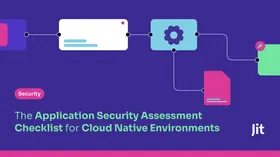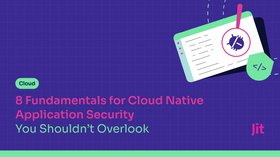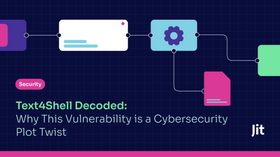A Guide to Designing and Building Secure SaaS Applications
Building a secure SaaS application isn’t just about patching vulnerabilities—it’s about baking security into every stage of development.
Updated April 1, 2025.

SaaS applications are now the backbone of modern business, but their growing complexity has also made them prime targets for cyberattacks. According to IBM, data breaches cost companies an average of $4.88 million, with SaaS environments facing increasing threats from API vulnerabilities, misconfigurations, and weak access controls. In fact, one in three breaches stemmed from shadow data (untracked or mismanaged information) highlighting the risks of poor data governance.
In simple terms, attackers are constantly finding new ways to exploit security gaps, making traditional security approaches ineffective. Organizations must take a proactive security-by-design approach, integrating automation, strict access controls, and continuous monitoring into their SaaS infrastructure from the start to stay ahead of evolving threats.
» Build secure SaaS applications with Jit's Product Security Platform
Key Challenges of Securing SaaS Applications
How Modern SaaS Architectures Introduce Security Challenges
SaaS applications rely on modern architectures that enhance scalability and flexibility but also introduce security complexities. As environments grow more distributed, protecting data, managing dependencies, and ensuring secure integrations become critical:
- Microservices: Large dependency trees introduce vulnerabilities, containerized environments often rely on outdated images, and excessive API exposure increases attack surfaces.
- Cloud-native environments: Misconfigurations in cloud infrastructure lead to unintended data access risks and security gaps.
- Open-source components: Supply chain vulnerabilities arise from using third-party libraries, especially when dependencies are outdated or poorly maintained.
» Here's all you need to know about API security
Why Development Teams Struggle With Security
Security is often an afterthought in fast-paced SaaS development, where rapid feature releases take priority over secure design practices. Many engineers lack security expertise, leading to overlooked vulnerabilities and poor risk management.
Even when security tools are available, they often create friction, slowing down workflows, generating false positives, or requiring manual intervention. As a result, security issues get pushed into the backlog as technical debt, leaving applications exposed to evolving threats.
To bridge this gap, organizations must embed security into the development lifecycle with automated, developer-friendly tools that minimize disruption.
» Make sure you know how to avoid these security misconfigurations
Why a One-Size-Fits-All Approach to SaaS Security Fails
Security risks in SaaS applications vary significantly based on architecture, industry regulations, and user expectations. A universal security approach fails to address these unique challenges each SaaS product faces:
- Tenancy risks: Multi-tenant SaaS platforms risk cross-customer data exposure. Strong tenant isolation (row-level security or encryption per tenant) helps prevent breaches.
- Regulatory compliance: Compliance requirements differ; healthcare SaaS must meet HIPAA, while fintech must comply with PCI-DSS. Early adoption of compliance-driven architecture (such as encrypting data in transit and at rest or maintaining audit logs) is essential.
- Security expectations: Consumer SaaS focuses on usability, often at the cost of security, while enterprises require strict access controls and compliance. Offering configurable security settings (SSO, RBAC, audit logs) ensures flexibility while maintaining security best practices.
Best Practices for Secure SaaS Development
Building a secure SaaS application requires more than reactive measures—it demands a proactive, security-by-design approach. Integrating robust security at every stage minimizes risks, protects data, and ensures long-term resilience against evolving threats.
1. Security-By-Design Principles
Building security into SaaS applications from the ground up prevents vulnerabilities before they emerge. Secure-by-design principles ensure that security is an inherent part of architecture rather than an afterthought.
- Start with secure architecture: Define security controls from the beginning, incorporating access controls and encryption.
- Use API Gateways: Enforce authentication, rate limiting, and input validation to reduce attack surfaces.
- Leverage service meshes: Implement mTLS and zero-trust networking for secure microservice communication.
- Enforce role-based access control (RBAC): Restrict access to sensitive data based on user roles and permissions.
» Learn more: The essential API security checklist
2. Proactive Risk Assessment Strategies
Anticipating risks before they become breaches is essential in SaaS security, as every architectural decision impacts overall security posture. Multi-tenant environments require strong data isolation and tenant-specific encryption to prevent unauthorized access.
Serverless computing introduces configuration risks, making continuous cloud monitoring crucial to avoiding security gaps. Third-party integrations pose another challenge, as external services can introduce vulnerabilities, requiring regular audits and strict API access controls to minimize exposure.
» Here are our picks for the top cloud security tools
3. Developer-Friendly Security Tooling & Automation
Security must fit seamlessly into development workflows to be effective, allowing developers to write secure code without compromising productivity. Automating security checks within CI/CD pipelines helps catch vulnerabilities early, while SAST tools and DAST tools provide deeper insights by detecting risks at different stages of development.
» Confused? Compare SAST to DAST
Manual security processes can’t keep up with the speed of SaaS development. Automated security checks, access controls, and compliance enforcement, allowing teams to focus on building software without introducing vulnerabilities. With real-time insights and automated remediation, security becomes an integral part of the development lifecycle.
To further streamline security, lightweight tools integrate directly into developer environments, offering real-time feedback and automating vulnerability detection.
Security tools for GitHub:
- Dependabot: Automatically scans dependencies for vulnerabilities and suggests updates, reducing supply chain risks.
- CodeQL: Performs SAST (static application security testing) to detect flaws like SQL injection and XSS before code is merged.
Security tools for IDEs (VS Code, IntelliJ, Eclipse):
- SonarLint: Detects security gaps and code smells in real time, helping developers write more secure and maintainable code.
- Bandit: A static analysis tool designed for Python that scans for common security vulnerabilities in code.
4. Threat Modeling & Security Assessments
Anticipating attacks is essential to preventing breaches before they occur. Threat modeling helps organizations identify vulnerabilities early, allowing them to implement stronger security measures before risks escalate. Regular security assessments, such as penetration testing and automated scans, ensure systems remain resilient against evolving threats by continuously identifying and addressing potential weaknesses.
Tools for threat detection & assessment:
- STRIDE model: Identifies key security weaknesses in system architecture and design.
- MITRE ATT&CK: Maps real-world threats to improve detection and incident response strategies.
- Regular security testing: Includes penetration testing and red teaming to proactively strengthen defenses.
5. Fostering a Culture of Security in SaaS Teams
A strong security culture starts with the mindset that security is everyone’s responsibility, not just the security team’s. Developers should be equipped with hands-on training in secure coding, while gamified security challenges like bug bounties and internal competitions make security engaging and rewarding.
Encouraging close collaboration between security, DevOps, and engineering teams ensures security isn’t an afterthought—it becomes a natural, integrated part of development, strengthening defenses without disrupting productivity.
Real-World SaaS Security Failures & Lessons Learned
Example 1: Uber Data Breach
In 2016, Uber suffered a data breach in which attackers gained access to 57 million user and driver records by exploiting AWS credentials that were mistakenly stored in a public GitHub repository. This breach underscores the critical need for securing secrets, enforcing access controls, and implementing automated secret scanning to prevent exposure.
Example 2: Capital One Data Breach
In 2019, Capital One, a major US bank, experienced a breach after a misconfigured AWS firewall exposed 106 million customer records, including Social Security numbers and credit scores. This case underscores the risks of cloud misconfigurations and the importance of proactive security measures, such as robust WAF configurations, continuous monitoring, and automated compliance enforcement, to safeguard sensitive data.
» Implement continuous monitoring today with these continuous security monitoring tools
Implement Security-By-Design in SaaS With Jit
Building a secure SaaS application isn’t just about patching vulnerabilities—it’s about baking security into every stage of development. A proactive approach, combining security-by-design principles, automation, and continuous monitoring, ensures that threats are mitigated before they become breaches. Securing your SaaS shouldn’t be an afterthought or a roadblock to growth.
With Jit, you get zero-trust access controls, automated compliance, and real-time security insights built right into your workflows. Instead of worrying about vulnerabilities or scrambling for audits, Jit keeps security seamless, proactive, and developer-friendly, so you can ship faster without compromising protection.
What You Get With Jit
- Zero-trust access control: Ensure least-privilege access without manual overhead.
- Automated compliance: Meet SOC 2, GDPR, and other standards without the hassle.
- Real-time security insights: Spot vulnerabilities and misconfigurations before they become a problem.
- Seamless integration: Works with your existing dev tools and CI/CD pipelines for effortless security.
» Ready to strengthen your security? Book a demo or try Jit for free






![Application Security Policies to Automate Vulnerability Triage and Management [PDF download]](https://entail.jit.io/en-assets/jit/fit-in/280x280/Application_Security-1739896057069.png)
